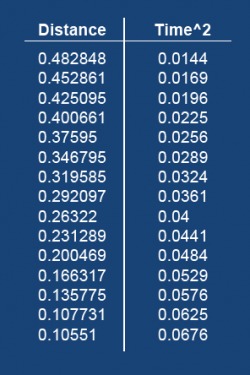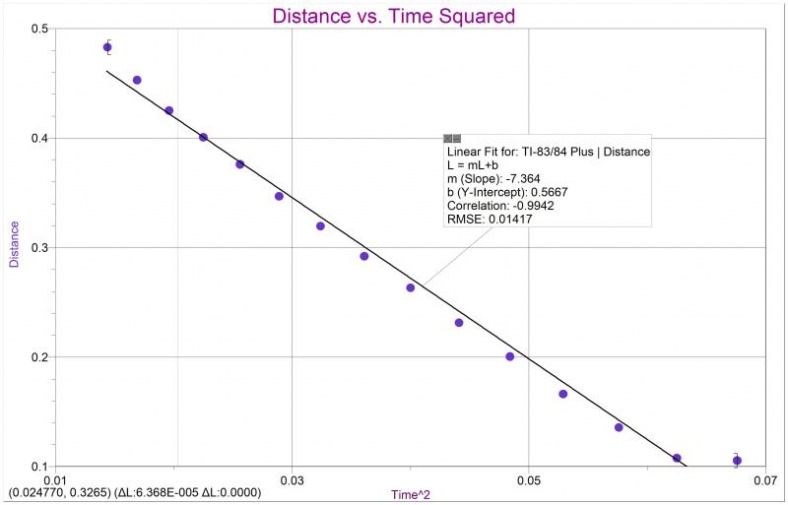Elise Livingston
Rotational Motion Lab
Purpose
The purpose of this lab was to measure the transational acceleration of the pulley, and to use the measured acceleration to analyze the validity of the assumption that the pulley exhibits rotational motion consistent with that of a disk.
Equipment
- Pulley
- Hanging mass
- Motion detector with CBL data acquisition system
- LoggerPro
- Notecard :)
- Hanging mass
- Motion detector with CBL data acquisition system
- LoggerPro
- Notecard :)
Procedure
In this experiment, we first set up the pulley system and tied the mass to the pulley so that, when dropped, the mass would fall over the edge of the lab table. We placed the motion detector directly underneath where the mass would fall. We taped a notecard to the mass so that it would be easier for the motion sensor to detect. We dropped the mass a number of times until we were able to obtain acceptable data. Once this data was collected, we used LoggerPro software to create a more clear graph and to compute a best fit line, and, therefore, the acceleration of the mass as it was dropped from the pulley.
Data
Data Analysis
First, we derived an expression to use to calculate our Moment of Inertia for the experiment. We used existing torque and Inertia equations to derive the formula and found that our Moment of Inertia was equal to 0.0013.
Second, we used the accepted Moment of Inertia equation for a disk to calculate what our Moment of Inertia should be. We found that, theoretically, it should equal 2.64 x 10^-6
Finally we compared the two Moment of Inertia by finding the difference between them and dividing that number by their average. We found that we had 199.18% difference between the two computed Moments of Inertia.
Conclusion
In our experiment, we wound up with a very high percent error. This could be due to a number of things. We know that we obtained faulty data because our acceleration was measured to be greater than acceleration due to gravity (9.8). We probably got such problematic data because of human error, or possibly even technological error. The motion detector may have not been set up correctly, or the mass may not have been released from the pulley at the exact time needed. It is also possible that there were some errors in measuring the mass and the radius of the pulley and the mass of the weight that we used. If these numbers were incorrect, our final conclusion would be negatively affected.
Also, from the first step of our data analysis it is easy to see the relationship between the translational acceleration of the falling mass and the angular acceleration of the pulley. Since the translational acceleration is equal to the angular acceleration times the radius, the angular acceleration is equal to the translational acceleration divided by the radius.
In this experiment, we did fulfill our purpose to measure translational acceleration, however, we did not prove that the rotational motion of the pulley was consistent with that of a disk. This is because we obtained very faulty data. However, much was learned about relationships between different aspects of rotational motion and translational motion.
Also, from the first step of our data analysis it is easy to see the relationship between the translational acceleration of the falling mass and the angular acceleration of the pulley. Since the translational acceleration is equal to the angular acceleration times the radius, the angular acceleration is equal to the translational acceleration divided by the radius.
In this experiment, we did fulfill our purpose to measure translational acceleration, however, we did not prove that the rotational motion of the pulley was consistent with that of a disk. This is because we obtained very faulty data. However, much was learned about relationships between different aspects of rotational motion and translational motion.






